About plainlight.
Thank you for dropping by to learn about plainlight. and its creator! My name is Juri Wornowitski, or simply J. for the sake of convenience.
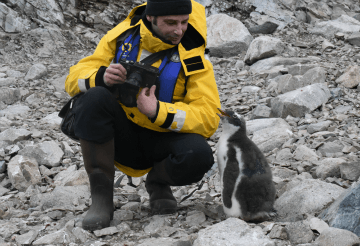 Being distracted • Neko Harbour, Antarctica
Being distracted • Neko Harbour, AntarcticaImage courtesy of Shanna Calero
Above I am doing what I love most. Travelling and taking pictures are my greatest passions. Sharing these images is my way of telling stories about my travels. I strive to make these stories worth being told. I hope I succeed sometimes.
So here I am, in the Antarctic summer, looking for a story and becoming
part of somebody else's one instead. Is it an interesting one?
You may want to rotate your phone in order to improve your browsing experience on this site.
About to start
I got my first camera given to me for birthday at the age of eight.
I didn't know what to make out of it. It was very simple to use, fully mechanical. Setting shutter speed was possible by choosing weather symbols, from the brightest sun all the way to the darkest clouds struck by lightning. I couldn't imagine making use of the camera in such a weather.
Aperture was coupled to film speed, selecting the latter set the former. Easy! – I couldn't care less.
My father, the creative mind behind the idea with the camera, was an avid amateur photographer taking pictures of seemingly everything during our summer holidays. He even went to develop his films single-handedly, locking himself up in the bathroom with stinky chemicals, much to displeasure of the entire family. The wet prints were then laid to dry on sheet glass taken from tabletops and put on beds around the house.
All in all, photography during my childhood was a nuisance. Dad loved it.
It wasn't before I started travelling on my own some twenty years ago that I changed my mind and began taking pictures myself, trying to tell the story of my journeys to those who stayed back at home. In 2002, I put first pictures on the Web. They are still online, though not in the most prominent place.
I am not ashamed of them. At the very least they show the way I have been following to arrive where I am today.
Here and now
In 2007, I bought a used Hasselblad XPan panoramic camera on a whim. I thought it would be nice to see – and picture – the world in a different, wider perspective. Besides, I was heading to Mongolia whose vast landscapes seemed to be ideally suited for the camera, or vice versa.
I was blown away both by the scenery and the small rangefinder camera. It has been accompanying me on my travels ever since, climbed above 5,000 m several times, spent some very cold nights in a tent, and run out of batteries off Baffin Island (that hurt)...
I am not sure how long it will keep going. It became difficult and expensive to develop film. The camera is now 15 years old and not getting younger. The scanner connecting me so far to the digital world is another relic.
But hey, photos are still made by people for people, not by cameras and not for computers. This is what I am certain of. And this is what this site is all about: helping you make your images what you want them to be.
Artist statement
This is the most formal and "official" part of the message on this page. Just look at the header ^^^ – scary! However, I think it is an important account of my motives and intentions, influences and beliefs, as well as techniques and approaches. I hope you will find this earnest and honest piece useful to understand what drives me and my work.
My passion is landscape photography. My goal is to create fine art photographs. In this, I see myself following the tradition of great masters like Ansel Adams, Edward Weston, Frank Hurley, and Herbert Ponting, to name just a few.
Fine art is arguably something in the eye of the beholder, and as such hard to define. However, it is easy to agree that only the highest quality, artistic and technical alike, pertains to fine art. I aim to achieve this quality in my work, with each and every image.
The nature is both my inspiration and my motif. My favourite subjects are mountains and open spaces of land and water. This preference might stem from the unattainability of snow-capped summits and blurred horizons, and from our longing to reach them all the same. I strive to convey this feeling in my photographs and to evoke a similar emotion from the viewer. In this sense, my approach builds on the principles of impressionism. As a matter of fact, I regard its masterpieces as my greatest artistic influences besides the classic landscape photography.
This motivation is then what entails my choices of equipment and techniques for creating my images.
- I work with film because, in my opinion, it is a more suitable medium to transmit emotions than a digital sensor.
- I use a panoramic camera perfectly suited to reflect the vastness of space before its lens.
- I shoot handheld, mostly improvising and composing "on the fly", in immediate response to what I see and how I feel about it.
I rarely include people in my images. Those who happen to be there are so just by accident and for a short time only. They are not a part of the scene which existed long before they arrived, and will persist long after they have left. Then, the human presence does not necessarily contribute in a positive way to the composition of the image. In my view, putting people on purpose into frame "for scale", as advised by many a tip, is showing disregard for them and the nature likewise.
The developed film is scanned and further processed by me digitally. The resulting images are thus always "manipulated" in some way. I see this process as an indispensable part of my style. The transformations a scanned image may go through include:
- cleaning from scanning artefacts
- levelling the horizon
- cropping
- enhancing contrast and colour balance
- converting to black and white
- tinting
I do not create a new reality with these modifications. The scene I show as the result is not imaginary, it is a perceived one. I use the process to recall and reproduce my emotions at the moment I pressed the shutter release. I do it in order to share these feelings with the viewers. Like other elements of my style, it is just the means to tell a story. I am convinced, if given the possibility, old masters of landscape photography would have wholeheartedly embraced it.
Juri Wornowitski
Wiesbaden, Germany
2016
www.plainlight.com
You can also download this statement as a printable document.
* * *
PS I would love to hear the story that penguin chick had to tell!
Get in touch
Don't be a stranger — follow the link to the Contact page and say hello. I will get back to you as soon as possible.
Follow plainlight. on Pinterest!
Tags: #juriwornowitski #plainlight #getinspired
|
Popular articles
-
A kind of magic
If a digital picture has to be seen in the real world, printed on a real medium and displayed in a real showcase, its transition from RAW to real is better done in an old school image editor. Enter A…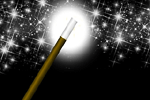
-
A duck for a dog
If you got your own place on the Internet, helping your visitors find what they are looking for is a great way to engage them and keep them staying a bit longer. A custom site search can achieve just …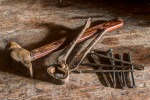
-
"Might as well have the best"
Aiming for better images? Think better lenses! This is your most important piece of gear, so you better get it sorted out. — Need some advice?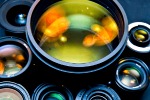
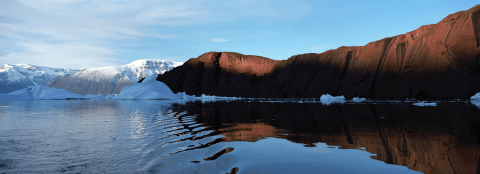

 Become a patron for
Become a patron for